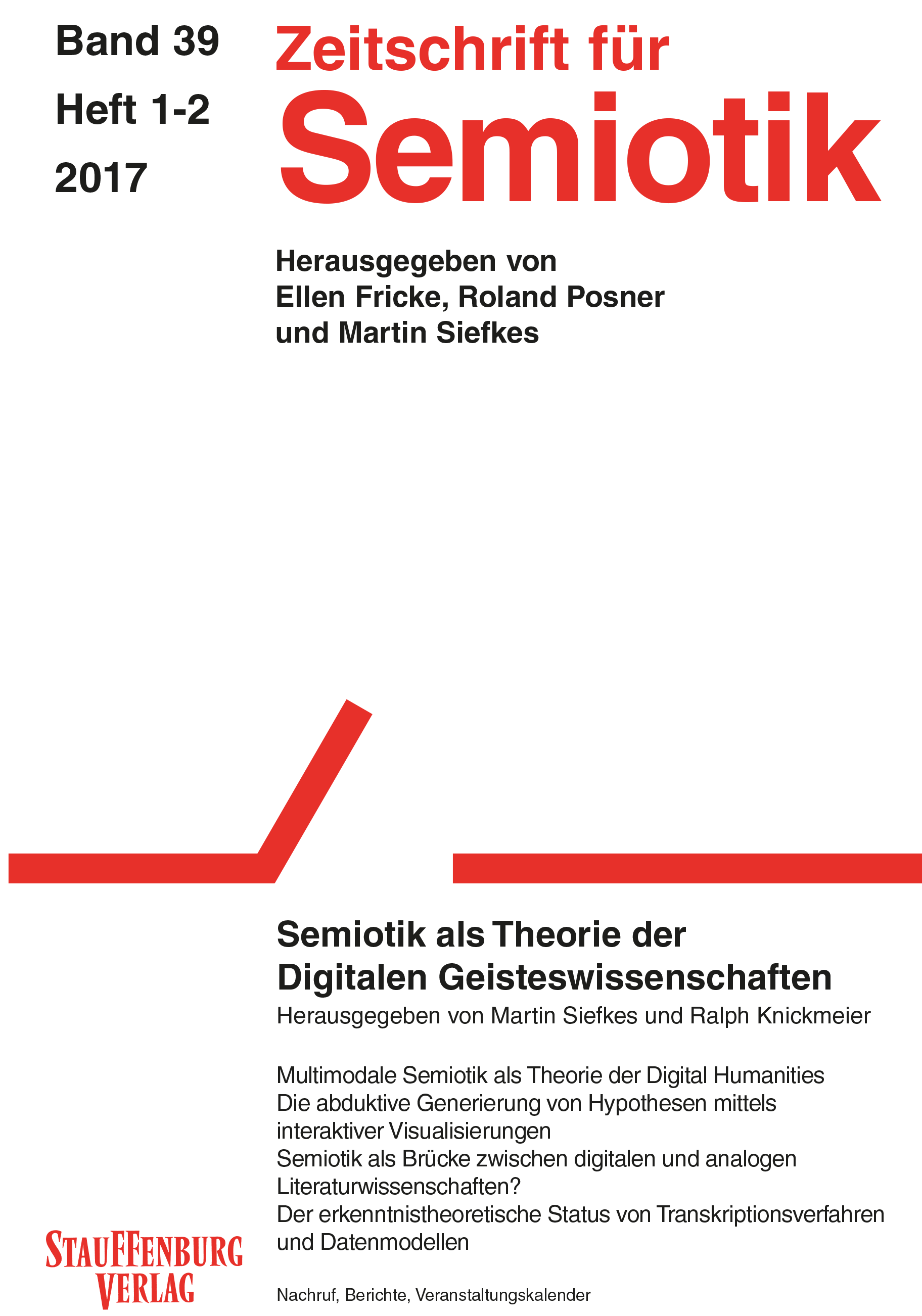Motion-Capture-gestützte Gestenforschung
Zur Relevanz der Notationstheorie in den Digitalen Geisteswissenschaften
DOI:
https://doi.org/10.14464/zsem.v39i1-2.674Keywords:
gesture research, co-speech gesture, multimodal interaction, multimodal corpus, motion capture, graphic representation, script, notational system, Nelson Goodman, theory of transcription, Ludwig JägerAbstract
During the last decade, and especially with the rise of the Digital Humanities, computer-assisted methods for gathering and analysing data have increasingly found their way into the humanities, which were traditionally oriented towards hermeneutics. Data elicitation and analysis are usually linked with quantitative research methods, but they are also connected with the construction of scientific models; they can be regarded as a transcription process that is involved in constituting the respective object of research. In this article, we study the use of motion capture technology for gesture research, in order to show more generally how theoretical modelling is connected with the process that we employed to “capture” co-speech gesture. A semiotic analysis is used to investigate the epistemological status of such data models, as well as the sign processes that determine this status. As a theoretical instrument for the analysis of these computer-assisted processes of modelling and transcription, we apply Nelson Goodman’s theory of notation, which provides clear syntactic and semantic criteria for describing digital, notational, and analogue symbol systems. As a further approach, Ludwig Jäger’s theory of transcription is used to highlight how computer-based modelling techniques constitute the objects of investigation in the humanities. The article asks the following questions: What exactly are we recording when we use digital computer technology to capture human motion? Which criteria can be used to model these semiotic processes? What advantages does motion capture give us, and does it really offer new perspectives in comparison with other techniques such as traditional video recordings? In conclusion, this contribution argues for a semiotic foundation for the digital humanities and comparable approaches in the social sciences.
Downloads
Published
Issue
Section
License
Copyright (c) 2024 Daniel Schüller, Irene Mittelberg

This work is licensed under a Creative Commons Attribution 4.0 International License.
Copyright for articles published in this journal is retained by the authors. The content is published under a Creative Commons Licence Attribution 4.0 International (CC BY 4.0). This permits use, distribution, and reproduction in any medium, provided the original work is properly cited, and is otherwise in compliance with the licence.


